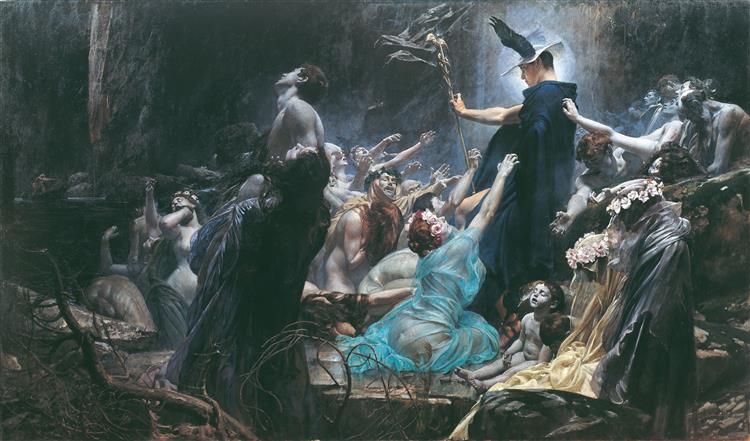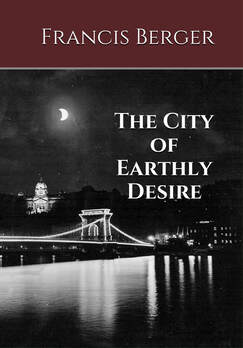Adolf Hirémy-Hirschl (1860 -1933) is best known for his renditions of mythological and historical scenes. Born into a Jewish family in Temesvár, Hungary (today Timisoara, Romania), Hirémy-Hirschl made a name for himself as an artist in Vienna, Austria where he spent the formative years of his career. Nevertheless, when Gustav Klimt and the Vienna Secessionist movement broke onto the scene, Hirémy-Hirschl chose to move to Rome where he dropped the Hirschl from his name and continued painting historical and mythological scenes. Hirémy spent the remaining 35 years of his life in the Italian capital, perpetually inspired by the architectural remnants of Roman civilization.
Many of Hirémy's paintings have been lost, but among those that have survived is his Souls on the Banks of the Acheron (also translated as Souls on the Acheron or Souls Waiting on the Banks of the Acheron) in which he offers his rendition of the dreaded river of woe the souls of the dead had to cross before entering the underworld.
Hirémy is often classified as a Symbolist painter and his Souls on the Banks of the Archeron is a powerful example of the inspiration behind symbolist art. Drawing upon the mystical tendencies of Romanticism, Hirémy crafts a haunting scene that includes familiar mythological elements depicting the underworld blended with what I would describe as nightmarish, late nineteenth-century thanatophobia.
I won't wade into any sort of analysis of the painting here, but I will say this - it has made a deep impression on me. I find myself wondering why I had not encountered it before. Conversely, I wonder why I have encountered this fin de siècle painting now - in the very depths of our current fin de siècle times.
Note added: Click on the image to examine the painting in a larger format - well worth doing!


 RSS Feed
RSS Feed

